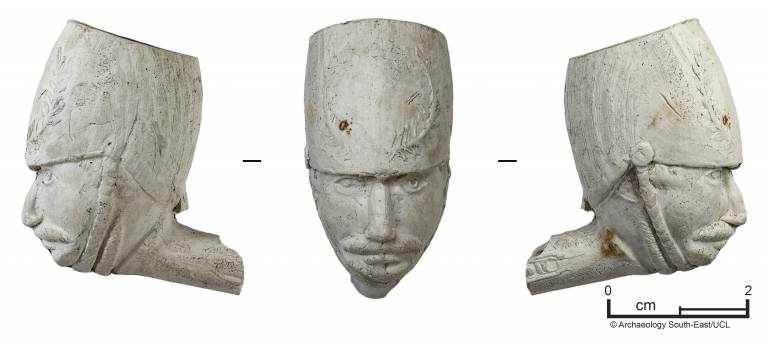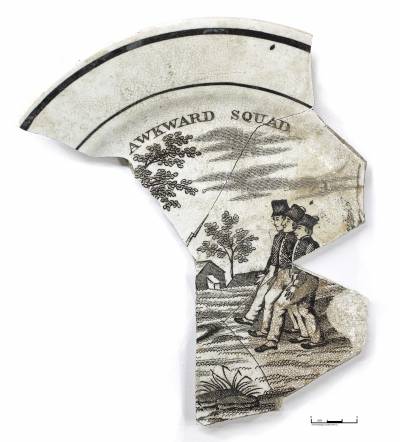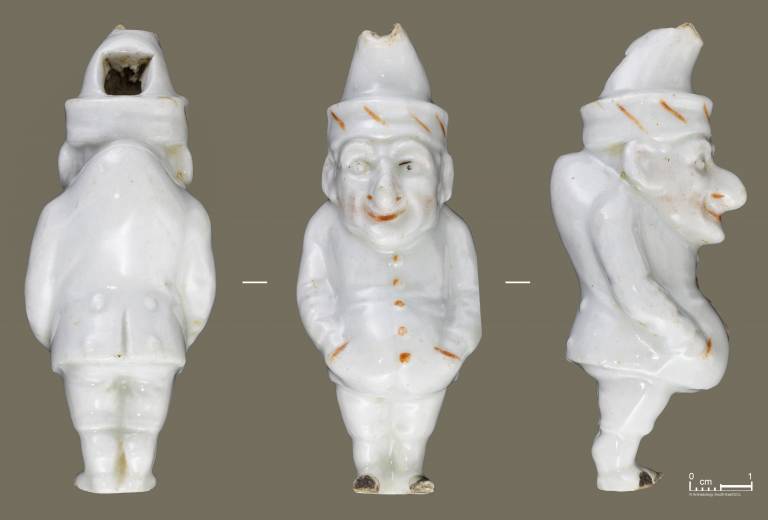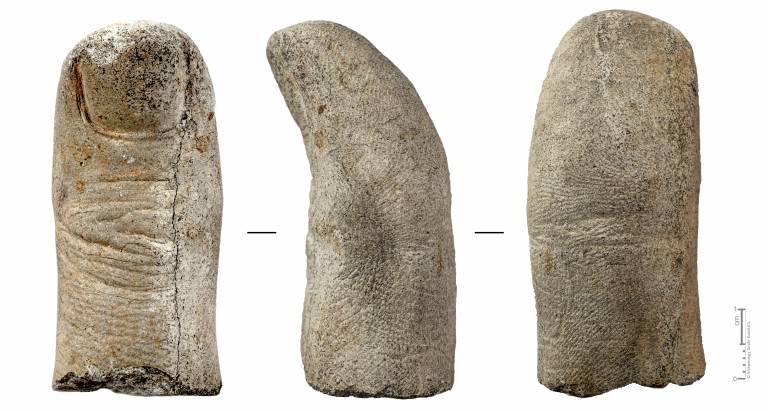Whitechapel Central: The People of Whitechapel
7 February 2020
The theme of this month’s update is ‘people’. We’ve collected together some of the more unusual finds that in some way represent the human form - in plaster, plate, clay pipe and ceramic.

You might remember the plate from last month’s post showing a man being expelled from a bar after gambling his money away. More unfortunate chaps are depicted on the below fragments of a late pearl-ware nursery plate, probably dating to c. 1820-1870, labelled the ‘Awkward Squad’. This was a common phrase in the 19th century for a group of recruits who were incapable of understanding discipline or carrying out their duties.

The Awkward Squad, late pearl-ware nursery plate (c. 1820-1870)

Clay tobacco pipe (c. 1840-1900)

Mr Punch whistle (late 19th/ early 20th century)
We’re affectionately referring this next figure as the Venus de Whitechapel! Archaeologists aren’t sure quite what it depicts, perhaps a little classical god or goddess. It is made of unglazed porcelain and also dates to the 19th century. You can view this as a 3D model here.
Our final find this month is a favourite amongst our archaeologists in the lab – it’s a plaster cast of an adult human thumb! It’s incredibly detailed, with fingerprints clearly visible. Plaster casts of limbs were occasionally used by artists to aid their study of hands, or taken ahead of a stone sculpture or metal cast of the same subject. Casts of hands were also occasionally taken as mementoes, particularly of the deceased. It dates to the middle of the 18th century to the 19th century.

Plaster cast of a human thumb (mid-18th – 19th century)
You can follow regular updates about the site using the hashtag #SceneSettingE1 on Twitter, Facebook and Instagram, visit Mount Anvil’s archaeology page, or view all our Whitechapel Central updates by searching for the site in our archives.
 Close
Close

